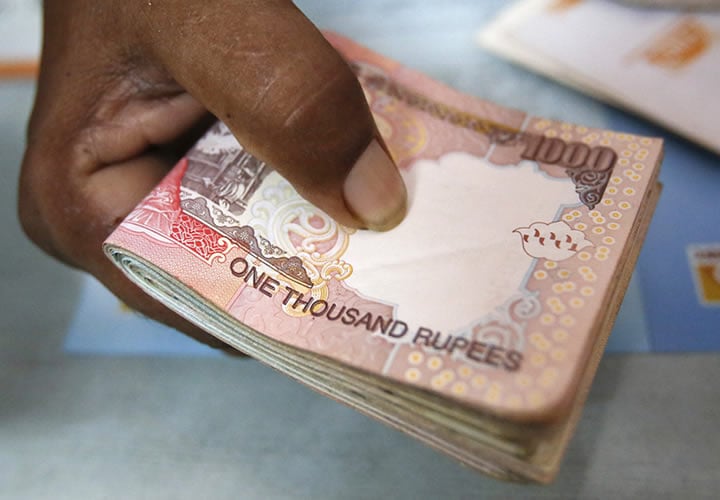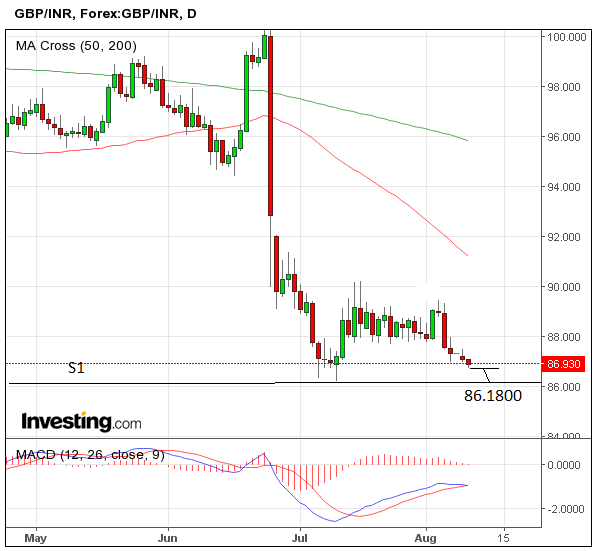Pound to Rupee Outlook Following RBI Rate Decision: 86.18 is Next Target for GBP/INR

The GBP/INR exchange rate rate remains in a steady down-trend in sympathy with the broad-based Sterling sell-off witnessed on global foreign exchange markets.
The Pound has weakened notably since the Bank of England (BOE) announced a comprehensive monetary stimulus programme at their highly-anticipated August 4th meeting.
With the Bank of England looking to ease monetary policy, and the Reserve Bank of India (RBI) keeping policy unchanged, we see the divergence necessary to lower the GBP/INR rate taking place.
The trend has been further reinforced after the RBI met on Tuesday 9th August and decided to keep interest rates unchanged at 6.5% despite an uptick in inflation to 5.77% in July.
The central bank stated it was keeping policy ‘accommodative’ with the Repo Rate set at 6.5%, despite the rapid food inflation seen of late.
Part of the reason for keeping rates low is due to the expectation that food prices will fall after this year’s harvest, which is expected to exceed expectations due to a heavier than expected monsoon (still in progress), which is likely to provide the basis for a strong 2016 harvest.
There had also been fears the Central Bank might raise rates to counter the expected inflation bump from the government's new Goods and Services Tax (GST) - which was passed by parliament on Monday.
Looking at the chart of the GBP/INR pair and we can see that the pair is still falling in the same post-Brexit trend that commenced in late June.
After going sideways for a bit it has started to break lower again and looks poised to trickle down to the 86 lows.
The next target is not far off at 86.18 where the S1 monthly pivot is situated.
Monthly pivots provide strong support for exchange rates as they attract attention from traders who use them as a gauge of the trend and often trade the bounces which often occur at those levels.
As far as the outlook for this pair is concerned the most significant source of risk for the rupee is from who will be made the next governor of the RBI after governor Rajan steps down in September.
Rajan has been hailed as a miracle worker by some after he helped dispose of the rising number of non-performing loans on state-owned bank’s balance sheets and helped stabilise the rupee, and he will be sorely missed.
His successor is likely to more dovish according to reports on CNBC, which is likely to be negative for the rupee.
For sterling all the focus is on how well the economy is holding up in the aftermath of Brexit.
Data out this morning showing a surprise rise in retail sales in July from the British Retail Consortium (BRC) failed to lift the pound , however, as it was dismissed due to retail sales being stimulated by the heatwave and increase in tourism due to the weak pound.
Comments from Ian McCafferty weakened the pound, however, after he said the BOE could cut rates to just above zero and increase QE if the economy continued to show signs of decline.
The NIESR GDP Estimate for July is out on Tuesday evening and may provide sterling with some volatility (in either direction) if it too shows signs the economy weakened - or indeed held up in July.





